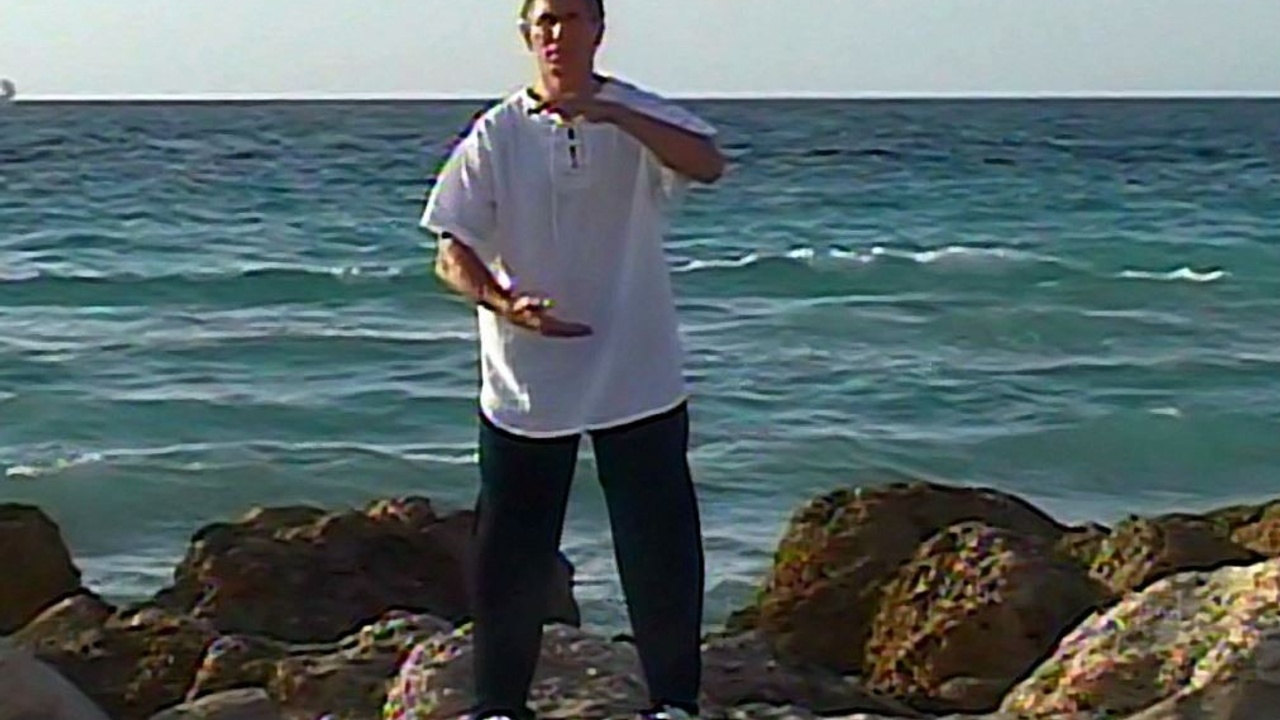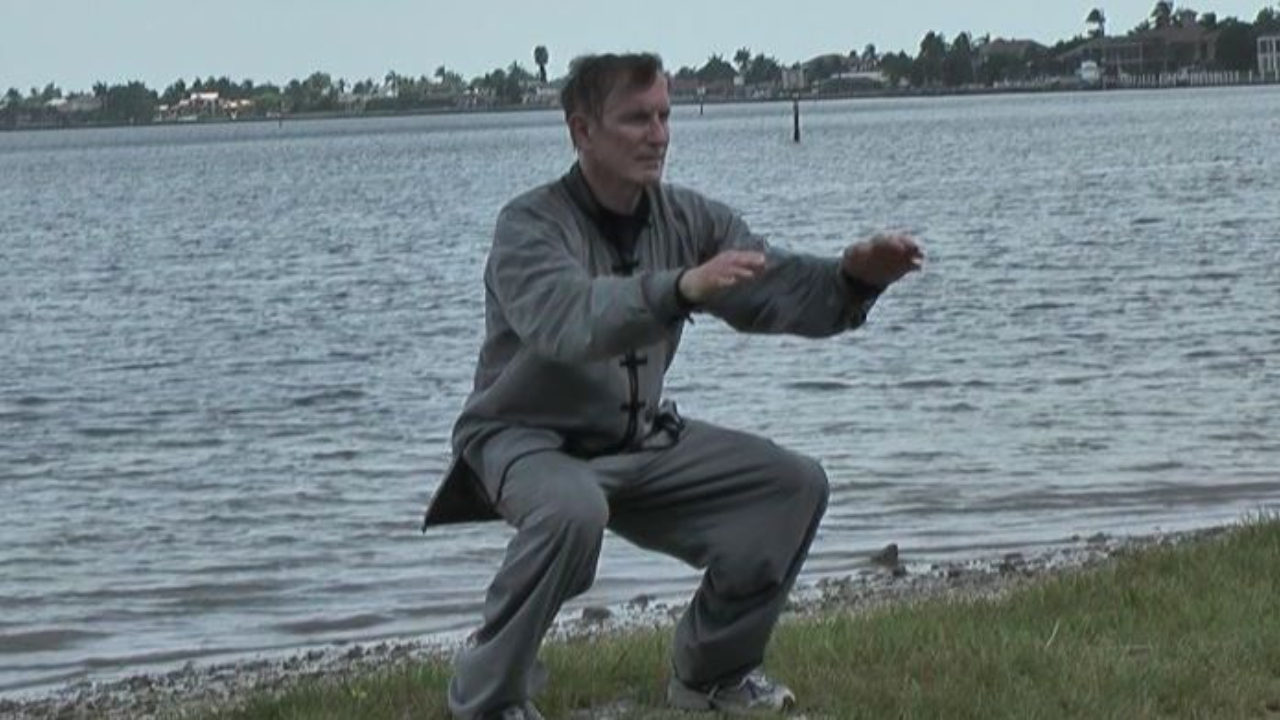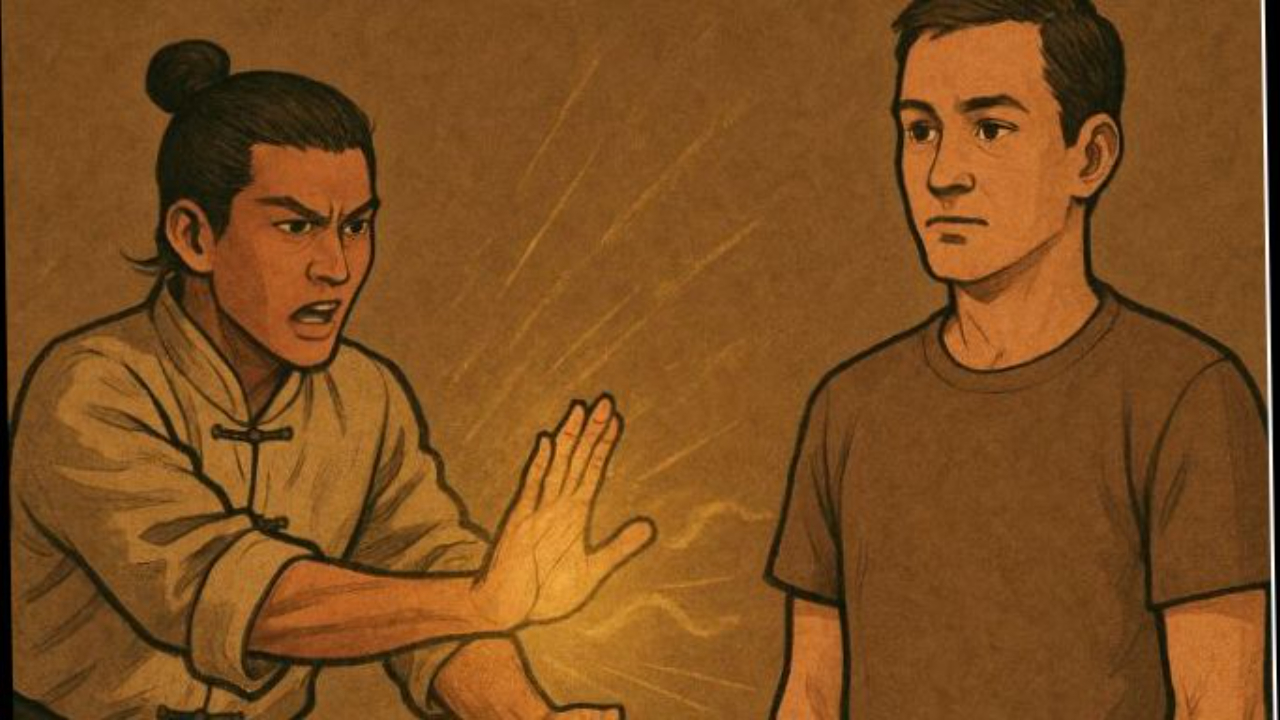How to Become a Chi Master and Ignite Paper with Your Qi
Some people really believe chi masters can project their chi (also spelled Qi) so powerfully that they can set something on fire -- like paper.
In this video, Ken Gullette demonstrates this ability and then shows you step-by-step how to do it. Remember, never check your brains at the door of a martial arts school. If you would like to study Taiji, Xingyi, Bagua and Qigong without the mystical mumbo-jumbo and fantasy, you are on the right website. Try two weeks free and study REAL internal arts.
How Often Do You Meditate?

I was in a class yesterday when another student asked the teacher a question about how often you should meditate.
It was an interesting question but my answer might be different than some.
One of the martial arts books that I bought back in the 1970s was "Man of Contrasts," by Hee Il Cho. It was a book about Taekwondo, but at the beginning of the book was a remarkable poem that has stayed with me ever since. Here is the poem:
I can find peace
amidst the cities roar
before the dry, frayed face of confusion,
the exhausted hour.
My peace is cradled within.
This poem came back to me around 1999 when I found myself walking through the crowded sidewalks of Times Square in New York City. People were almost shoulder-to-shoulder, walking in all directions, and instead of being stressed, I found that I was calm, centered, with a feeling of being connected to each person who rushed by -- peace amidst the city's roar.
I began doing qigong in 1987. My goal was to recreate the feeling of in...
Internal Breathing for Tai Chi, Qigong, Bagua and Xingyi

|
Zhan Zhuang and My Old Buddy: An Idea for Elderly Friends and Family

My neighbor Earl is one of my best friends. He is also 96 years old. A couple of weeks ago, I realized that he could benefit from the practice of Zhan Zhuang -- "Standing Stake" or "Standing Pole."
If you do Zhan Zhuang as part of your practice (I call it "Standing Stake"), you can teach it to elderly people in your life.
We moved into our current home almost four years ago and Earl, who was 92 at the time, walked across the street to introduce himself to us. His mind was sharp and he had a great sense of humor. His wife had died two years before. He fought in the Philippines during World War II, came home with PTSD, but got help and lived a happy and successful life. His three sons all live within a mile.
During the first year we lived here, I was friendly with Earl and would sometimes cross the street when he was outside to talk to him.
But during the last three years, Earl and I have developed a close friendship. My home office looks out toward his house. We sit out during warm ...
Qigong - Chi Kung - and the Eight Pieces of Brocade

It’s impossible to trace the origin of many chi kung exercises. The Chinese people have a military history that dates back thousands of years, and the value of exercise and stretching were probably recognized very early as being beneficial for the success of battlefield troops.
The images above – and below – were found in the tomb of King Ma, who lived before Christ, died in 103 BC and was buried with many documents, including military training manuals. The documents were discovered when his tomb was found in 1973. Some of the images are very similar to chi kung exercises, including movements from the Eight Pieces of Brocade.
I first learned the Brocade exercises as chi kung, but the more I practiced, the more I came to believe that these were also used as stretching and leg conditioning exercises for Chinese soldiers. It is possible that the chi kung interpretation was added many centuries later.
The Eight Pieces of Brocade is not a mystical or magical routine. Practicing the...
Are My Health Issues Related to Bad Qigong?

I received a very nice email this morning from a man in Rio who suggested that I've been having breathing problems due to performing chi kung improperly.
I certainly appreciated his concern and the fact that he reached out, and I understand he has good intentions (he has worked with chi kung for 30 years) but -- it will come as no surprise to those who know me -- I couldn't let this go by without a challenge. Don't blame me. I'm a stickler for facts and critical thinking.
Here's another way to look at it. Perhaps my condition hasn't gotten a lot worse because I do chi kung properly.
In my reply to this nice guy in Rio, I asked him if he could supply me with any clinical evidence to back up his theory. I prefer, of course, peer-reviewed trials, preferably double-blind but at least something that can be duplicated by other medical trials.
I would like to issue this challenge to anyone reading this. Can you supply me with valid, objective clinical trial evidence, peer-reviewed, that ...
The 8 Pieces of Brocade - Qigong and Conditioning All in One

I just put a new video onto the online school-- the 8 Pieces of Brocade. This is a qigong exercise -- 8 movements -- that also serves to help in strengthening and conditioning the body, particularly the legs.
The 8 Pieces of Brocade are said to have been created about 1,000 years ago in the Sung Dynasty by Marshal Yeuh Fei for the exercise of his soldiers. It's pretty clear to see when you perform them that these are very effective for stretching and "warming up" before hard exercise or a good workout. In fact, it's possible this series of movements wasn't created as qigong at all, but that qigong was injected into the movements as the centuries went by.
I'm a firm believer in the positive impact of qigong, although I don't necessarily subscribe to the ancient science. When you calm the mind and body, put part of your mind on your dan t'ien, detach from daily concerns and use mental visualization techniques (involving the visualization of chi) it has a tremendous impact on your abi...
Chi Kung - Five Minutes That Can Help Balance Your Mind and Life

A lot of mythology has developed about chi kung (also spelled qigong). "Chi kung" literally means "energy work," and it consists of a series of exercises to calm the mind, calm the body, and focus on breathing.
Chi kung and its medical theories were developed thousands of years ago, by the same people who believed you could tell the future from the cracked shells of turtles. Despite this dubious past, and many of the dubious claims made by people who believe whole-heartedly in miraculous claims of healing related to chi kung, it remains an outstanding way to control stress and ride the ups and downs of a turbulent life.
But it's all in your mind, and it takes practice. It can be a method to help you with mindfulness - being "in the moment," and reacting to stress not with tension, but with calm.
The good news is--five minutes a day can lead to remarkable changes in your health and your relationships. It can lead to a healthier body and a more balanced life.
You Can Learn to Center ...
Why a Cell Phone is a Lot Like Chi

News articles have been springing up about phantom vibrations that cell phone users feel. It seems that our brains are so accustomed to anticipating a vibrating cell phone when it's being worn on our belts or in our pockets, that even when the phone isn't there, we can suddenly feel it vibrate.
Our brains learn to anticipate the vibration, and something will trigger the impulses in the brain that make you feel as if your phone is vibrating even when it's back home on the table.
When I saw this story on NBC News this weekend, I saw a parallel to the sensations that so many people say is "proof" that chi is real. They'll do chi kung exercises and they'll swear that they feel tingling or heat or all types of sensations.
I've felt the sensations, too. In fact, there's one chi kung exercise I do and I can feel a ball of energy going from my dan t'ien through my right arm, jumping across from my right hand to my left hand, then coursing through my left arm and back to my dan t'ien.
Your ...
A Major Chi Fail

Last year, a student joined our tai chi class who has been involved in the art for decades. He even teaches now, even though he really shouldn't, based on his knowledge of body mechanics.
One night in class we had a discussion of chi, and I explained my views. I said that no one could use chi to make a person move without touching them.
"I can," he said.
"Really? You can make me move without touching me?" I asked.
"Yes, I've done it many times."
"Well, all I can tell you is one, no you haven't, and two, you certainly can't make me move without touching me," I said.
So, with several students watching, he walked up close to me. Very close. His face was inches away from mine, and he held his hands up just a centimeter or two from my face.
Now, the natural human reaction when someone moves so close is to back away, but that's what he expected me to do. Instead, I relaxed and decided that I wasn't going to let the fact that he had violated my space bother me. He kept his hands in fro...
